Are you a Quiet Speculation member?
If not, now is a perfect time to join up! Our powerful tools, breaking-news analysis, and exclusive Discord channel will make sure you stay up to date and ahead of the curve.
As promised, welcome back to the Beginner's Guide. Back in August I explained the general types of Modern decks to explain why Modern is so proactive and diverse. Today we will start to unpack that riddle by examining how to approach playing and playing against Modern's aggro decks.
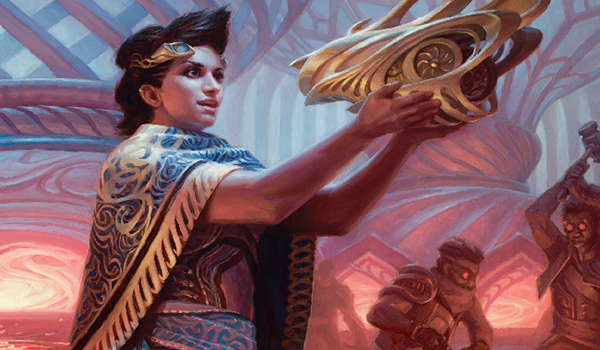
As I said last time, aggressive decks are by far the most common decks in Modern. And this shouldn't be surprising. Wizards has printed a lot of cheap, efficient, and powerful creatures over the years. They've also printed a lot of very good support spells for those creatures. As well as burn. As a result there exists a critical mass of tools for aggressive players to choose from and a vast array of decks is the natural result. It should surprise absolutely no one.
However, more players complain about how aggressive Modern is than anything else. There are a number of schools of complaint, but on whole the problem seems to be how difficult it is to be anything other than aggressive. I'm not entirely sure what players are expecting, the larger the format the better the threats are going to be. This is true of every eternal format. The only reason control rules Legacy is because Miracles employs a soft lock.
The thing is, I don't think most players think about the Modern metagame correctly. Look at our Top Decks page. Most of the decks in Tier 1 are aggressive. Many of the aggressive decks in Tier 2 are Tier 1 contenders. You can prepare a control deck to beat aggressive decks and expect to do reasonably well in a tournament. Beating other decks should necessarily be a lower priority. If you prepare against these decks correctly, then true control decks DO work in Modern.
[wp_ad_camp_1]
What is Linear Aggro?
Linear Aggro decks are the classic creature decks of Magic, a lineage stretching back to the original Sligh deck. These decks seek to utilize the mana curve and mana efficiency to knock their opponent to zero as quickly as possible. The original Sligh decks played worse cards than everyone else (Goblins of the Flarg? Seriously?) but it didn't matter because other decks at the time didn't use their first few turns worth of mana. By the time they really began 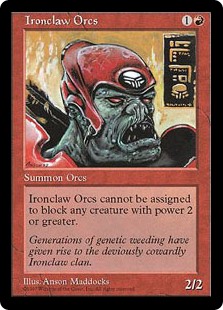 playing Magic they'd taken enough damage for a few Incinerates to finish the job. A good linear aggro deck follows this tradition by playing efficient creatures and frequently burn to kill the opponent on turn 4. It seeks to be the first onto the battlefield and win the game via tempo and raw damage output.
playing Magic they'd taken enough damage for a few Incinerates to finish the job. A good linear aggro deck follows this tradition by playing efficient creatures and frequently burn to kill the opponent on turn 4. It seeks to be the first onto the battlefield and win the game via tempo and raw damage output.
The classic example is Zoo. It plays the most efficient creatures at every mana cost and supports them with burn to quickly kill an opponent. Wild Nacatl is a 3/3 for one mana. Tarmogoyf is rarely less than a 3/4 for two. You play the best cheap creatures in large quantities, attack with them, and if the opponent answers the creatures you finish them off with burn to the face.
This is not the only strategy available to linear aggro. You can go the Merfolk route of playing synergistic or evasive creatures. This will not be as fast a kill as a Zoo style deck, but it gains some additional reach and flexibility. Large creatures are less likely to stall your offense if you can match or exceed their size or simply go around them. You can also reposition away from pure agro towards aggro-control by playing ways answers yourself. You lose speed but gain the ability to protect your clock and disrupt your opponent, which is valuable against control and combo decks. Linear aggro decks are recognizable by their gameplan and creatures, but they can take many forms.
Taking the initiative
When playing any deck it is important to remember that you have a gameplan and then execute it. This is deceptively hard for an aggro deck. Yes, you have a very straightforward plan - kill the opponent quickly. The problem is that said opponent gets a vote as well. Determining how to correctly sequence your threats to mitigate the impact of answers on your clock is as much an art as a skill, and you frequently find yourself making very simplistic plays following complex thought.
 On the surface this makes no sense. Linear aggro wants to play its creatures and attack. The problem is that your threats are not particularly durable and it is rare for aggro to have any card drawing. This isn't necessarily a problem, your card advantage comes from the opponent dying with cards in hand. Except when they have answers for all your threats and you're stuck in topdeck mode, desperately trying to put a board back together. You have to play enough threats to close out the game, but no so many that you cannot rebuild if things go wrong. This is not an easy skill to master.
On the surface this makes no sense. Linear aggro wants to play its creatures and attack. The problem is that your threats are not particularly durable and it is rare for aggro to have any card drawing. This isn't necessarily a problem, your card advantage comes from the opponent dying with cards in hand. Except when they have answers for all your threats and you're stuck in topdeck mode, desperately trying to put a board back together. You have to play enough threats to close out the game, but no so many that you cannot rebuild if things go wrong. This is not an easy skill to master.
The important aspect to remember is that as an aggressive deck you are dictating the pace of the game. Your opponent is reacting to you in a timeframe and on a battleground of your choosing, not theirs. You can set the clock as fast or as slowly as you wish. I don't recommend going for a slow pace in most circumstances, but if your threat density is high enough compared to the opponent's answer density then it can be effective. The key to being an aggressive deck is to either push the opponent onto their back heel and keep pushing until they fall over or make them fight on your choosing. If you do that effectively, you will win. Allow the opponent to dictate the pace or place of battle, and their more powerful cards will crush you.
Being the Aggressor
Every deck is different and demands its own playstyle and skillset, but I can offer some general advice for those looking to start attacking in Modern.
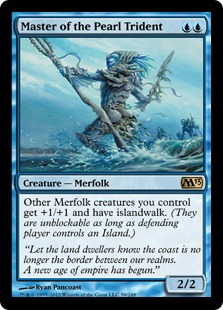 First of all, a new aggro player must learn sequencing. Knowing which threats you can expose to answers when and how to maximize your clock in their face is critical. This requires learning your deck and understanding what cards really matter in a given matchup. The second skill is to learn what answers see play, how they affect you, and when you need to or can afford to play around them. You need to be able to recognize what your opponent's mana represents and how that card will affect the battlefield. Some cards you cannot avoid, but you can mitigate their impact. Others you can make less valuable by changing playstyle.
First of all, a new aggro player must learn sequencing. Knowing which threats you can expose to answers when and how to maximize your clock in their face is critical. This requires learning your deck and understanding what cards really matter in a given matchup. The second skill is to learn what answers see play, how they affect you, and when you need to or can afford to play around them. You need to be able to recognize what your opponent's mana represents and how that card will affect the battlefield. Some cards you cannot avoid, but you can mitigate their impact. Others you can make less valuable by changing playstyle.
The final skill is learning to play on your opponent's fears. Creating uncertainty in your opponent is valuable and it is possible for proactive decks, especially aggressive ones, to make an opponent so afraid of dying from the wrong play that they make no play, or one that is good on paper but bad in the context of the game. Making the opponent play scared of a burn or pump spell you don't have, or simply fear tapping out and getting hit by Collected Company, generates a tremendous amount of virtual card advantage and is an excellent way to steal wins.
Fighting Fire with Fire
Building off of that advice, if you want to beat a linear aggro deck you can either answer them or ignore them. Thus far in Modern, ignoring linear aggro has been far more successful than answering it. Aggro traditionally suffered against combo when its clock wasn't fast enough to race the deck. Ramp was also a struggle because aggro's creatures are easily outclassed. Aggro's power comes less from card impact than it does from efficiency, and it is not that hard to out impact a Kird Ape. This is why decks like Titan Breach and Ad Nauseam are good choices in an aggro filled Modern metagame.
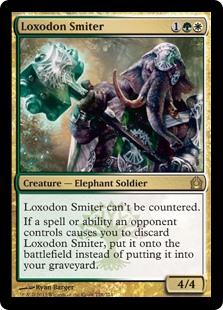 In Modern, it is not that hard for aggressive decks to find some form of disruption to improve their matchup against combo and/or ramp. Thoughtseize, Ghost Quarter, and Spell Pierce are just a few options and they go a surprising distance to closing the traditional weakness. What few aggressive decks can easily do is improve the size of their creatures (Merfolk being the main exception). Big green creatures from midrange or Stompy decks are the traditional nemesis of aggro, and the go bigger strategy still works today. Wild Nacatl is a very good creature but it isn't going through Loxodon Smiter without help.
In Modern, it is not that hard for aggressive decks to find some form of disruption to improve their matchup against combo and/or ramp. Thoughtseize, Ghost Quarter, and Spell Pierce are just a few options and they go a surprising distance to closing the traditional weakness. What few aggressive decks can easily do is improve the size of their creatures (Merfolk being the main exception). Big green creatures from midrange or Stompy decks are the traditional nemesis of aggro, and the go bigger strategy still works today. Wild Nacatl is a very good creature but it isn't going through Loxodon Smiter without help.
You can also beat aggro by being even more aggro. In the past aggro on aggro was decided by who had the most removal and resolved the threat that stuck. Now it is possible to simply blast past them. Decks like Infect, Affinity, and Suicide Zoo have good matchups against normal Zoo, Eldrazi, and Merfolk because they have much faster goldfishes and can win though blockers. If you want to beat linear aggro, it's a proven strategy to be more proactive than they are.
Quench the Fire
The other option is to answer the aggro decks, exhaust their answers and win back the initiative. This is the midrange/control strategy. The midrange decks have been very successful, particularly Jund, but in Modern control struggles.
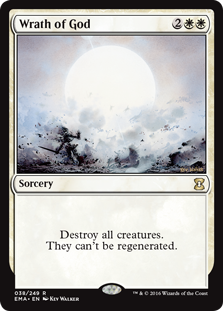 Traditionally control decks have focused on having answers for everything, card advantage, and a few largely unanswerable win conditions. Look back at everything Shaheen Soorani has written for some examples. These decks ran a lot of counterspells, targeted removal, and sweepers to staunch the bleeding from aggro decks and break-up combo decks. This was fueled by card drawing and games were closed once they were already won. This doesn't happen in Modern, and most players blame the diversity and speed of the format. I disagree, and think the problem is that control players misbuild their decks. Most Modern control decks focus on targeted removal and card drawing but don't play sweepers. This is a mistake.
Traditionally control decks have focused on having answers for everything, card advantage, and a few largely unanswerable win conditions. Look back at everything Shaheen Soorani has written for some examples. These decks ran a lot of counterspells, targeted removal, and sweepers to staunch the bleeding from aggro decks and break-up combo decks. This was fueled by card drawing and games were closed once they were already won. This doesn't happen in Modern, and most players blame the diversity and speed of the format. I disagree, and think the problem is that control players misbuild their decks. Most Modern control decks focus on targeted removal and card drawing but don't play sweepers. This is a mistake.
The most common control list in Modern is Jeskai Control. The only truly hard answers it plays are Path to Exile and a few counters. It relies on soft answers in the form of burn. As such it is unequipped to effectively fight aggro when they are able to outsizeLightning Bolt (which explains Eldrazi's rise)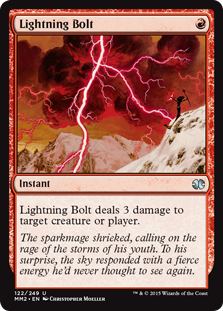 . Lacking sweepers like Supreme Verdict means that it struggles to come back from behind, once control's greatest strength. This is the real problem with Modern control, not the rest of the meta.
. Lacking sweepers like Supreme Verdict means that it struggles to come back from behind, once control's greatest strength. This is the real problem with Modern control, not the rest of the meta.
As a Merfolk player, I am not afraid to play against a deck filled with targeted removal. All I have to do is avoid getting my Silvergill Adepts countered and my threat density and cantrips will keep me ahead of all the Bolts in the world from my opponent. What I never want to see is straight UW Control with lots of sweepers. I can deal with one-for-ones, I can't fight multiple-for-one more than once. If you want to beat aggro as a control deck, BE A CONTROL DECK! Stop being a glorified burn deck.
Burn
I'm going to single out Burn for a digression. This decks gets a lot more hate than the other true linear agro decks, and in my experience it does not deserve it. The deck is not that hard to beat or to correctly play against. It is a very good deck, especially in the hands of an experienced player, but it isn't so good that it is actually oppressive or too powerful. The problem for many players is that they've made themselves needlessly vulnerable to Burn.
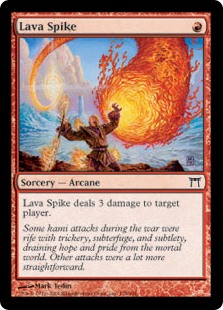 Burn has been called the seven-card combo deck, since it just needs seven spells that deal three damage to win. Anyone who's tested the deck will tell you that it is far more complicated to pilot than it appears. The reality is that Burn is a deck that excels at dealing 18 damage to their opponent. They can do it with any reasonable opening hand. The problem is those last few points. However, they often don't have to do it alone. The opponent does the job for them.
Burn has been called the seven-card combo deck, since it just needs seven spells that deal three damage to win. Anyone who's tested the deck will tell you that it is far more complicated to pilot than it appears. The reality is that Burn is a deck that excels at dealing 18 damage to their opponent. They can do it with any reasonable opening hand. The problem is those last few points. However, they often don't have to do it alone. The opponent does the job for them.
I am convinced that the hate stems from players killing themselves in the face of burn. The fetch/shock manabase of Modern makes it very easy to give Burn players free Lava Spikes, ignoring the Philosophy of Fire. The problem isn't that Burn is too good. It's that players play into the strategy.
If you struggle against Burn the solution is simple and obvious: stop Bolting yourself. Saving even a few points of damage may be the difference between victory and defeat. Merfolk has a good matchup with Burn, not because of a faster clock (they're about equal speedwise) but because it employs a painless manabase. If you cannot avoid self-harm, seek help. Run some lifegain. Lightning Helix sees more play than it "should" for this reason. Burn takes advantage of players ill-discipline and greed. Be more virtuous and you will easily overcome.
This article is starting to run long, so I'm ending it for this week. I'll be back next week with the Power-Card decks and Gotcha!
More Importantly...
The voting has closed on my banlist testing. I was surprised by the number of responses and encouraged by the thoughtfulness behind them. Bravo Nexites. Bravo.
Drumroll, please!
AND THE WINNER...By a nearly two to one margin...IS...
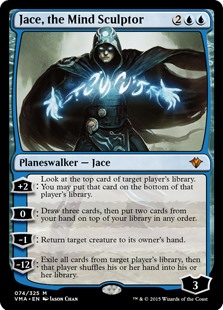 <Fanfare> Jace, the Mind Sculptor! <Cheers, confetti, party horns, etc.>
<Fanfare> Jace, the Mind Sculptor! <Cheers, confetti, party horns, etc.>
While I'm not surprised by the result (I'd started looking at candidate decks before the article was a day old) I was surprised by the scale of the victory. Jace received 21/57 votes to runner-up Preordain's 11. Dig Through Time was third with 9. The people have spoken, and I hear you. Sometime reasonably early next year I'll show you the results of my work with Jace. Until next time!





Would be funny if they unban him before you get your article of data out… xD
Regarding the method for putting turbo on creating testdecks, here’s an example:
(The deck linked was not developed by a human, but by the method I described in last post)
http://www.mtgvault.com/wickeddarkman/decks/modern-tournament-shriekers/
It’s sort of a grixis control deck. Keep in mind that it isn’t humanmade, so it has some radical cardpicks which can all be defended if you want to know about any specific card.
Much obliged, wickeddarkman.
I don’t think that’s going to work for the purposes of testing. That deck looks horrible. The issue isn’t pulling up decklists – an hour on MTGTop8 and you can come up with some good decks to test out. The issue is finding pilots that are experienced with the archetype and willing to put the time in to jam games. You’re not going to play against bots to make determinations as important as whether a card should be unbanned.
That deck list doesnt exactly look like the next evolution of magic. It looks like it’s trying to be cute but is actually just not gonna work X amount of time, which is terrible because it relies on winning g1
Your point about sweepers is very good. I’ve been running Esper Control in modern for a while, and I would not leave home without at the very least two sweepers main deck. Usually I have three, split two Supreme Verdict and one Wrath of God. The sweepers are imperative for ensuring you can deal with low to the ground decks, but also, critically, allow you to “waste” time drawing cards to hit laND drops, since you don’t have to use that mana to answer every creature one-on-one. If I don’t have a sweeper in hand, I’ll likely Mana Leak your Goyf turn two, but if I do, I might cast Think Twice and see if you play anything else out.
I totally agree with your point about Modern control and sweepers, there definetly aren’t enough being played, although control being bad in modern isn’t quite as simply fixed by just playing more sweepers.
Yeah cavern of souls is a nonzero problem for control, and aether vial and coco can squeeze you too. Now you may also have quellers and selfless spirits and flashed in drogskol captains making a mockery of your removal.
Control is squeezed by all these sorts of cards plus the general versatility of modern. How does esper control beat dredge g1? And how do you like the autolose to tron and valakut decks? Now watch your deaths shadow or infect opponent roll you down with one body while you look at your painfully slow four mana removal spell.
But controls big problem imo is randomly getting obliterated by vial or cavern in a match that should otherwise be good. Hatebears, merfolk, eldrazi, and random tribal decks where spell snare logic knot esper charm verdict should be an awesome curve turns to trash with t1vial or t2cavern. You also get no free wins w control because your finisher will by necessity be slow. No chording for kiki jiki for gg or just casting become immense. You take the long road everytime and any mistake usually costs you the game because as per above – there are no free wins.
Vial and cavern are problems if you’re focused on counters as your answers, but are far more manageable for control than you might expect, and I’m saying this as a Merfolk player. Remember, traditionally control decks boarded out counters against linear aggro because they were bad in the first place, so Cavern is not as big a factor as you might think. Vial is a problem, but that’s why I say they need to play ways to sweep multiple times. I do have more lengthy explanations, but I will be saving them for the article I’m planning on the subject.
“This doesn’t happen in Modern, and most players blame the diversity and speed of the format. I disagree, and think the problem is that control players misbuild their decks. Most Modern control decks focus on targeted removal and card drawing but don’t play sweepers. This is a mistake.”
Sorry, but what? Most decks kill t4-t5 in Modern and you’re advocating playing more sweepers instead of Lightning Bolts? There are UW/Esper control decks in Modern that play MD sweepers. They rarely put up good results. So this claim of yours seems largely unsupported. Have you ever played any of these decks yourself or are you basing you claim solely on the fact that you play a fringe deck that sweepers are good against?
As I say later on, I know this from the side of an aggro player. Merfolk cannot deal with multiple sweepers. It’s why I shifted to Spell Queller. Most linear aggro decks cannot recover from being swept once, much less twice, and as a result UW control has been very good for weeks at a time in my local meta and online. UW control with Condemn, Path to Exile and Sunlance backed up by Supreme Verdict is shockingly strong against the agro decks and Ancestral Vision plus planeswalkers gives it solid game against BGx. Expect more on this in an article soon.
If modern was one hundred percent aggro? Sure load your deck with path condemn verdict playsets. Then proceed to lose to dredge, valakut, ad naus, tron etc. Being the reactive deck means you need universal answers – verdict is lousy vs bgx decks and useless vs the ones above. I still play 3 in esper control because you have to. But if you dont play spell snare and logic knot you’re basicaly giving your opponent three turns to do whatever they want in a turn four format.
As you say david a topic for another time – but the question of why theres no control in modern is a lot more engaging than how to build an aggro deck in modern :p
Any chance on sharing the Jace deck list when you make your final decisions?
I’m not saying that those things are not good against aggro decks. You’re basically describing UWr Nahiri though. Bolt is just a MUCH better card than both condemn and sunlance. It’s not hard to throw in 2 MD sweepers in UWr, there’s no reason to play UW for that express purpose. I always play 1 MD sweeper in UWr Nahiri and 1-2 more in the SB. Sweepers can be good, but they’re sorcery speed removal that cost 4 mana. Against aggressive decks I want my deck stacked with cheap effecient removal.
There will obviously be days where you wish you filled your deck with WoGs, but overall and from the pov of a UWr player, I think you’re wrong. You’re not looking to get ahead on cards early. You just want to kill all their stuff and let vision resolve then play cards that they can’t deal with. Preferably at instant speed, but Nahiri/Elspeth will do. Also, UWr is already very good against most aggressive decks. Sweepers would help against Eldrazi/Merfolk but would be quite redundant in most MU’s and useless in all the others. We need counterspell!
While Sunlance, Condemn, Path into Verdict will probably kill most aggro decks (especially if you can chase that sequence with something like Sun Titan), it won’t do anything against linear combo like Ad Nauseam. The reason control decks do so poorly in Modern is that they don’t have enough efficient, versatile tools to get through the early game against a diverse set of opponents.
If winning were as easy as running more removal, we’d see blue-based control actually perform in Modern. But it’s not. The pros and other high-level Modern deckbuilders didn’t just forget Supreme Verdict exists.
Which is why I was specifically referring to beating Modern aggro. I fully intend to address this two articles from now.
Eldrazi is the main reason why sweep is ineffective, you hold on to those verdicts, damnations and wrath’s and then see the first go at turn 2 to a thoughtknot, later when you finally sweep everything you just face a 5/5 trampler with haste instead…
But I don’t think he’s arguing to play ONLY sweepers. If we start from the premise that we’re looking at base UW for a control deck (in order to get access to Supreme Verdict and Wrath of God) then we should by default be playing 4 path, which solves early targeted problems. Blue has vapor snag, which while not a hard answer, doesn’t really need to be (except perhaps in the case of Reality Smasher, but we also have path). Black has Disfigure. And if we move back to Jeskai, we have the ever-present bolt.
Not to mention that there are available early game sweepers we can use in Esper and Jeskai. Zealous Persecution comes to mind, as does Flaying Tendrils etc, as well as the increasingly relevant Anger of the Gods for Dredge.
The list of options really goes to say that the problem for control is and has always been finding the right diversity of different answers. Sure, in Legacy it’s simpler than in modern because there are more unconditional answers, but that doesn’t change the base premise.
It seems to me that an awful lot of people think “control” means playing a pile of blue countermagic that profitably answers any and every relevant threat your opponent presents, until they have nothing left to contest whatever fat wincon you might want to deploy. Start talking about needing more than just counterspells, or even (gasp!) using nonblue colors for a control deck, and suddenly you obviously don’t know what control is and why it’s not viable in Modern.
The way I remember it, control means disrupting your opponent’s “Plan A” enough to force the game into later turns when you can deploy and protect a game-ending threat. Just because you can’t do the disruption phase purely on the back of hard counters and efficient draw spells doesn’t mean it can’t be done. You just have to put more thought into it than “pile of the best blue instants, fling them at everything”. I think the fact that there have been formats in the past where that was the best way to do control has put some very narrow-minded paradigms into the Magic community’s thinking.
I do agree that when we lament the absence of control we jump straight to blue based control. Nobody means we need more tron or lantern or 8rack. But those decks all operate on a very funky axis where you’re leveraging synergies to be effective.
The idea of control is that at some point in the mid game your opponent is effectively dead because you can answer whatever they try to do. The most effective answer here is a hard counter like cryptic command (cavern of souls and cast triggers on ulamog notwithstanding). A fist full of paths and wraths looks prety embarassing when your opp casts scapeshift.
Classic uw control was built around counterspell, swords to plowshares, and wrath of god – I dont know how it originally drew more cards :p but the idea was if opp slow rolls threats you efficiently one-for-one them, if they overextend you wrath them and counterspell had your back against any noncreature problems while also still hitting creatures if you couldnt swords.
In modern we need countermagic to do the same job of covering you against weird cards while still hitting creatures when you cant path. But 2cmc counters all have drawbacks and we get turfed by cavern or vial in a way old school control never did. You can use discard instead, but those become dead draws late game and push you towards midrange with goyfs or tasigurs instead of control just wining with a tar pit or shambling vent.